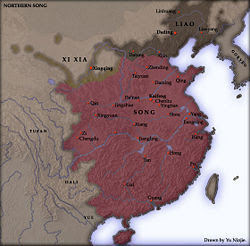
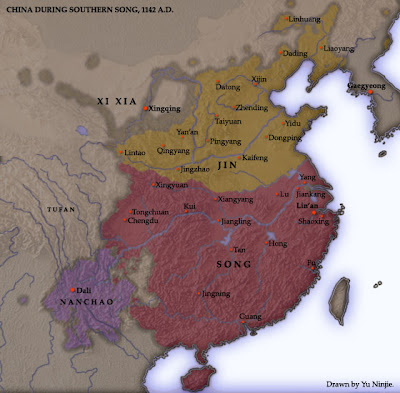
The Song dynasty was regarded as the first government in history to issue paper money.These paper money first appeared in the province of Sichuan.Emperor Zhenzong(998-1022AD),the 3rd emperor of the Song dynasty allowed 16 rich merchants in Chengdu in the province of Sichuan to issue paper money.Sichuan province was also the place where the art of printing was invented.Acted as credit notes,these paper money was known as Jiaozi.Credits notes often are for a limited duration, and at some discount to the promised amount later.
 Emperor Zhenzong
Emperor ZhenzongWith the high circulation of the notes,the Chengdu local government established the earliest administrative and savings bank known as the Office of Jiaozi. These banknotes could be converted into hard cash at any time in any of the issuing banks. Widely circulated, they were readily accepted for the payment in debt and other financial obligations
 Rabbit and Jay birds(Cui Bai,1061)
Rabbit and Jay birds(Cui Bai,1061)However there were some merchants who were slow to redeem their notes and the paper money became inflated.Because of this the issuing of paper money privately was banned and the notes were withdrawn.In 1023 the government established the Bureau of exchange and only official notes printed by the government was allowed.
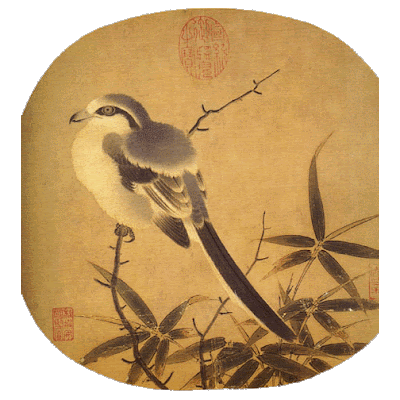 Bird on branch(Li Anzhong,12th cent)
Bird on branch(Li Anzhong,12th cent)The Bureau issued notes were known as Huizi and issued in 1160AD were in denominations of 200,300,500 cash and 1,2,3 strings of cash.These notes were the highest issued amount among other type of notes during the Song dynasty. This new adopted governmental policy of issuing notes was successful at first for two reaons: First, for each issue of paper notes to be put into circulation, the government provided a cash backing. Second, paper notes and standard coins were interchangeable and a citizen could buy salt or liquor with his paper notes from the government-owned stores which were as good as coins.
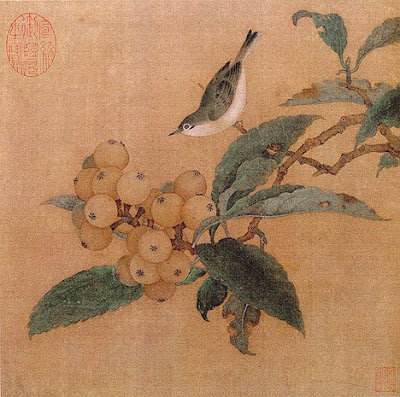 Loquats and mountain birds
Loquats and mountain birdsNow more about the Jiaozi. Pictures of houses, trees, and people were printed on it. Red and black inks were intermittently applied; the seals of the issuing banks were affixed; and confidential marks were made on each bill. All these devices made counterfeiting extremely difficult. These banknotes could be converted into hard cash at any time in any of the issuing banks.
 Duckling
DucklingAnd now the Huizi,these notes were supposed to be redeemed by later issues but the government did not exercise enough control and these notes became inflated also,the government knew this this and quickly used it to pay for military expenditures.The government kept increasing the amount of Huizi until the country was full of it and at the end of the dynasty, these notes became almost worthless.Here are the Song notes for your viewing pleasure.The 2nd was hard to find.
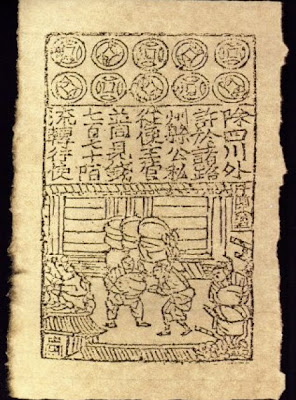 Jiaozi note
Jiaozi noteText-Board of Rites printed this note for the people and to be used side by side copper cash,reward for informing on a counterfeiter is 1000 taels of silver
 Huizi note
Huizi noteThese notes are said to be extremely rare and were sometimes found during archeological digs,or reproductions were made with the plates found during excavation.
No comments:
Post a Comment